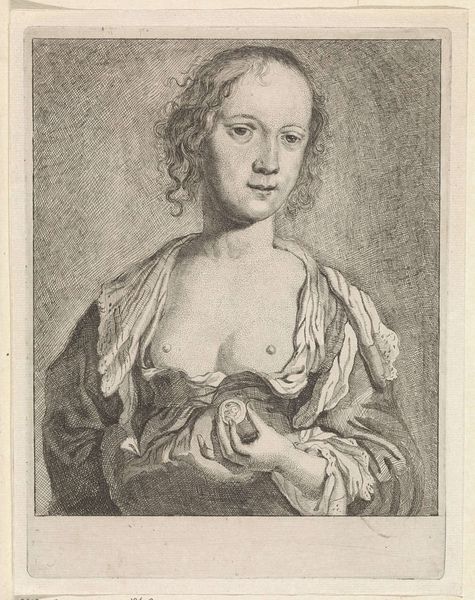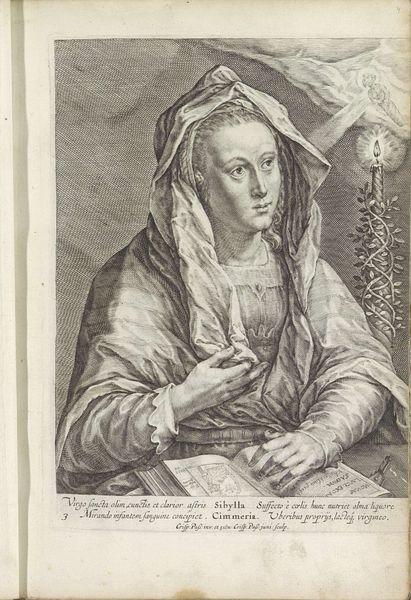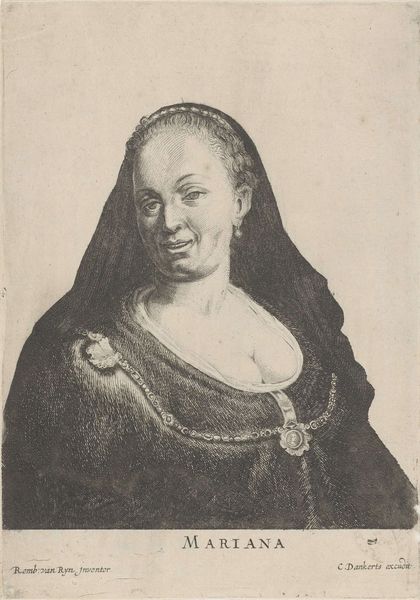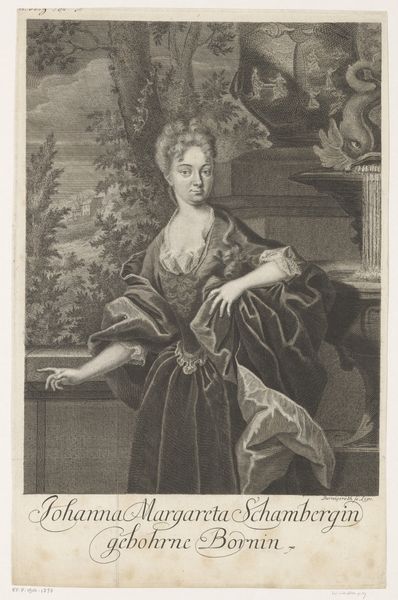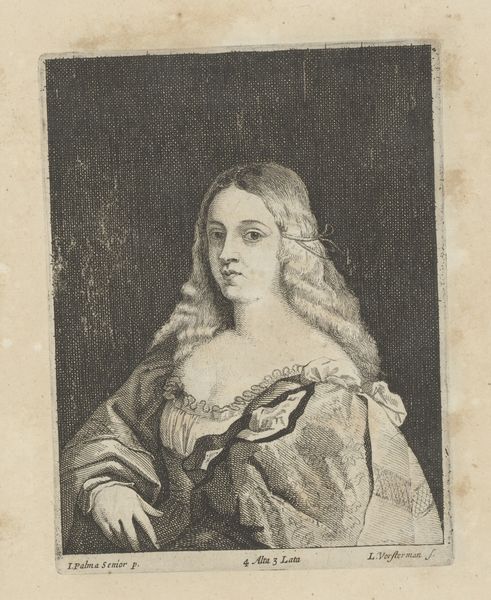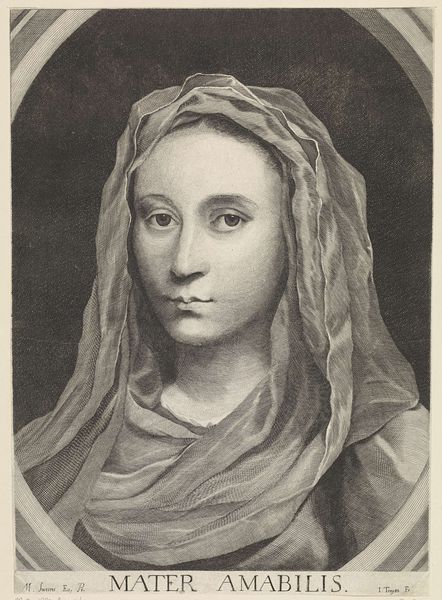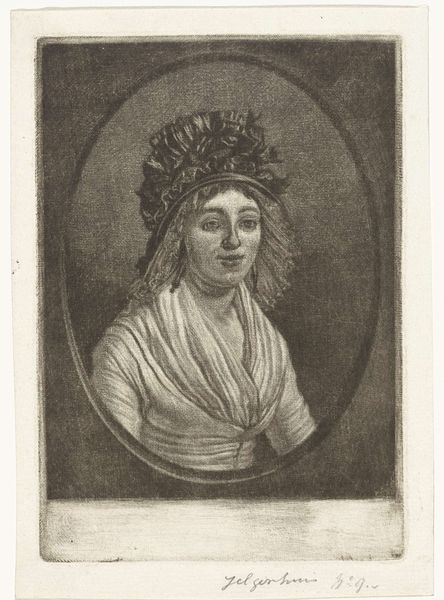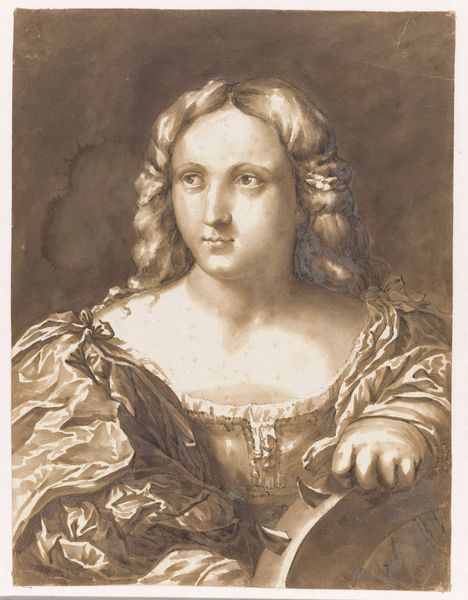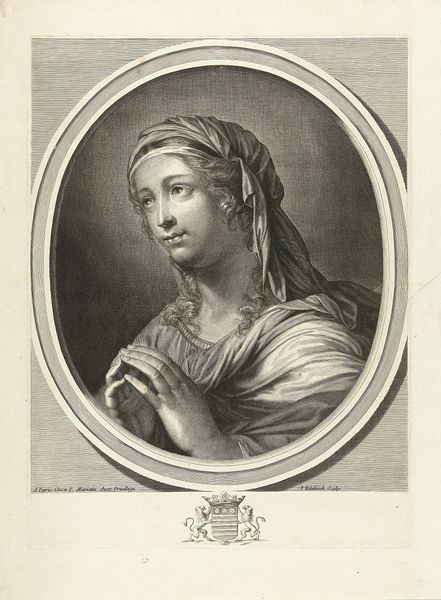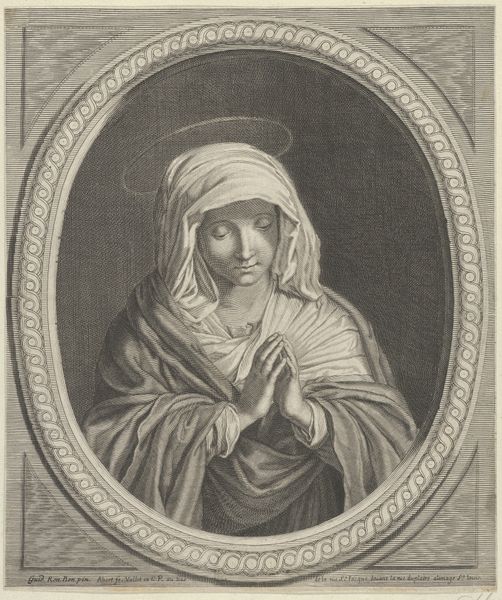
drawing, charcoal
#
portrait
#
drawing
#
baroque
#
dutch-golden-age
#
charcoal drawing
#
portrait drawing
#
charcoal
#
portrait art
#
realism
Dimensions: height 148 mm, width 95 mm
Copyright: Rijks Museum: Open Domain
Curator: This is "Woman with Sheet Music," a charcoal drawing now held at the Rijksmuseum, attributed to Johannes de (II) Groot and likely created sometime between 1698 and 1776. What are your initial thoughts? Editor: The charcoal rendering creates such a soft, almost melancholic effect. The oval frame adds to that feeling, making her seem caught in a memory. Curator: Indeed. The artist masterfully employs chiaroscuro to direct our attention to the woman's face and hands. Observe how the light catches the folds of her head covering and the pearl earring, contrasting with the shadowy background. It’s a carefully orchestrated visual rhythm. Editor: I'm intrigued by the musical sheet she holds. In Dutch Golden Age portraiture, the inclusion of musical instruments or sheet music often indicated the sitter's refined education and cultural standing. This woman clearly belonged to a privileged class. Curator: Precisely. Music literacy was a significant social marker, associated with both wealth and leisure. Furthermore, portraiture served as a means of constructing and projecting one's identity and legacy within a very specific cultural framework. Editor: I wonder, though, about the performative aspect. Was her identity actively reinforced, or rather subverted by its formal constraints and gendered context, through which expectations from class, family, and social structures determined her visibility? Is she confined within a very specific domestic sphere? Curator: An interesting interpretation! Considering it through the lens of structuralism, we observe a binary tension—freedom and confinement, visibility and erasure. How are we, the observers, complicit in decoding this very delicate balance? Editor: Exactly, and portraits are, by definition, a construction of that observation, a visual contract established within specific parameters, so can the viewer extract authenticity from an encounter that remains self-consciously symbolic? Curator: The dialogue highlights the complexities of portraiture from the Dutch Golden Age, challenging us to look beyond the surface presentation. Editor: Leaving us to ponder on a range of interesting themes beyond her simple presence!
Comments
No comments
Be the first to comment and join the conversation on the ultimate creative platform.
